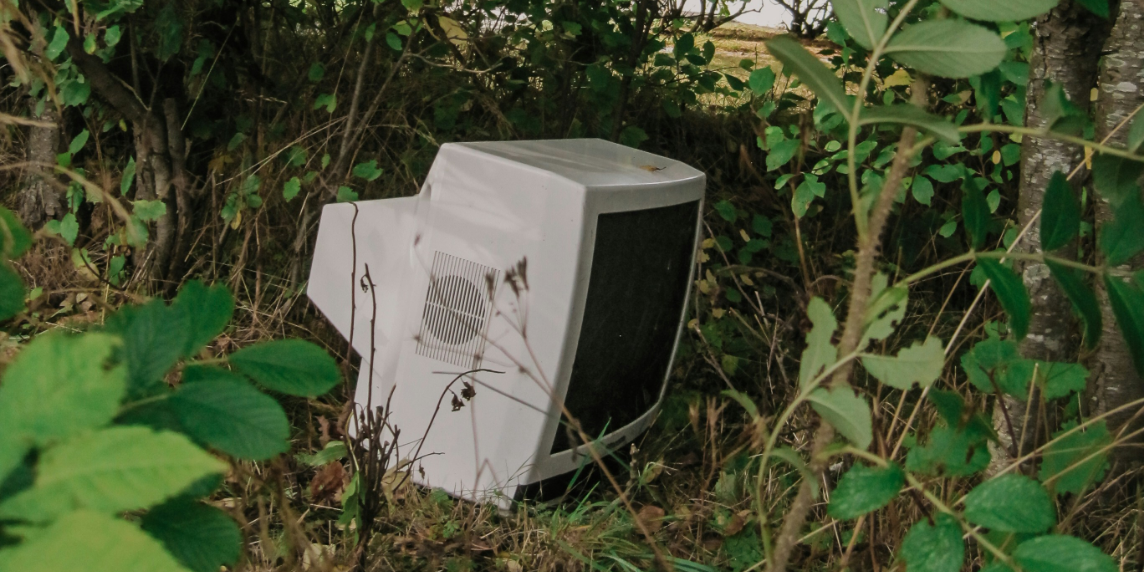Making sense of our connected world

The digital metabolic rift: Why do we live beyond our means online?
A quick tap on Google Maps, a casual search query, a video to unwind at the end of the day – our digital lives feel light and limitless. Data seems to flow effortlessly, leaving no trace behind. But beneath the smooth surface of our digital world, a high-intensity metabolic system is running at full speed: data centres, cloud systems, algorithms, and data streams consume vast amounts of water and energy. Despite their constant availability, digital products are not an inexhaustible resource. So why do we overlook the environmental cost of our digital consumption? And what does this have to do with a “metabolic rift”?
We avoid plastic straws, fly less, and sort our waste to protect the environment, yet we browse the internet and stream in HD every day. Our ecological awareness often ends where the digital begins. What many people don’t realise: just 20 Google searches consume roughly the same amount of electricity as an energy-saving light bulb running for an hour (Gramsch, 2023). Generative AI tools like ChatGPT push this energy demand even further. One prompt can consume nearly three kilowatt-hours of energy (Weiß, 2024) – about the same as three hours of vacuuming. The internet is not a vacuum; it uses electricity, water, and rare resources – on a massive scale. Or is it that we simply don’t want to know?
Are data the new oil?
Data are the raw material of the digital economy. But at first, they are a useless mass. Just as oil was the basis for energy, transport, and production in the industrial age, data now underpin digital services, business models, and artificial intelligence (Taffel, 2023). We generate data through our active use of digital spaces – clicking on search results or sharing social media posts – but also passively, through location tracking and screen time.
Only by analysing data – for instance, by counting clicks or categorising shared content – does it become usable (Zuboff, 2023). Data are processed and refined until they acquire value. This commodification of data parallels the refining of crude oil into industrial fuel (Zuboff, 2023). Take personalised advertising: knowing that someone clicked on a particular pair of shoes is of little use by itself. But when this click data is combined with information like location, time, previous searches, and demographics, it can be sorted and placed within a user profile, allowing predictions about preferences. These predictions then enable targeted advertising and generate profit.
Behind the clouds
The process of refining data – storing it in cloud systems, analysing, and distributing it – also consumes energy. Like the harmful effects of oil production, this is often concealed (Taffel, 2023). As users, we rarely see where and how our data are processed. At the same time, we constantly generate new information by browsing, scrolling, and clicking. In the background, vast data centres function like digital factories: they store information, make it available on demand, and perform complex calculations. Through cloud systems, this data isn’t stored in one location but distributed across many sites. This is called decentralisation. To keep it all running, data centres require continuous power, and their high-performance computers must be constantly cooled to prevent overheating.
Because we perceive data as invisible and weightless, we tend to overlook the physical consequences of processing it. The necessary infrastructure is hidden from view – and so is its energy consumption. This makes it difficult to develop awareness of the environmental footprint of our digital activities.
Could looking inside our own bodies help us understand why we so often ignore this burden?
A look within
To better understand why we rarely register the environmental costs of our digital behaviour, it helps to look at a familiar system: our metabolism. In biology, it refers to all the processes through which the body absorbs nutrients, converts them into energy, and expels waste. These exchanges make essential bodily functions such as breathing, circulation, and thinking possible.
In environmental and social science, metabolism is also used as a metaphor for the relationship between humans and nature: we extract resources like water, energy, and raw materials, process them in work and production, and return emissions, waste, or digital residues back into the environment (cf. Foster, 1999 & Saito, 2016). This relationship is sensitive. What we take and what we give back affects ecological balance.
Metabolism out of balance
A so-called metabolic rift occurs when this balance is disturbed. As early as the 19th century, Karl Marx described how capitalist production disrupts natural cycles: in the pursuit of profit, resources are depleted faster than nature can regenerate (Foster, 1999). Agriculture provided an early example of how economic structures are closely tied to environmental impact.
Today, the rift is more visible than ever, in the form of climate crisis, biodiversity loss, and environmental degradation. It threatens not only our natural foundations but also social stability. In times of crisis, the desire for security and self-preservation tends to override the pursuit of personal growth (cf. Staab, 2022).
But this metabolic rift is no longer limited to agriculture and industry. In the digital world, too, we draw on natural resources and organise labour in ways that intensify ecological and social imbalances. I propose the term digital metabolic rift as a conceptual lens and theoretical tool to better understand the ecological impacts of digital infrastructures. It is an attempt to make these complex connections more tangible.
Are we experiencing a digital metabolic rift?
Digital technologies may appear clean and intangible at first glance. But beneath the surface lies a dense web of material infrastructures and human labour. The use of energy, raw materials, and human effort is as central here as in traditional production – though it is often hidden from view.
In the digital space, it is not farmland that is depleted. Instead, it is servers that demand electricity, devices that consume rare earths, and people who moderate content, sort data, or train AI systems. These tasks are often poorly paid and carried out under precarious conditions, especially in the Global South (cf. Hara et al., 2018).
Unlike in industrial agriculture, where environmental damage was visible on the surface, the consequences of digitisation remain largely hidden. Raw material extraction, data processing, and digital labour are outsourced to distant locations – far removed from our devices and daily perception. This invisibility makes the digital metabolic rift so critical: it operates in the background, with ecological and social costs that go largely unnoticed.
But who bears responsibility for this gap – and who could close it? Digital corporations? Policymakers? Investors? Or we, the users?
Can digital companies mitigate the metabolic rift?
A natural starting point is the major digital corporations. They operate the infrastructures at the core of the digital metabolism and possess both the technical and financial means to drive change. But how much room for manoeuvre do they really have? And what are their motivations?
The business models of digital companies rely on the continuous flow of data. To process these data, they depend on massive data centres with high-performance computing and enormous energy demands. Tech giants like Google and Amazon are driving global electricity consumption with their widely distributed server farms.
To address this development ecologically, many companies have set ambitious goals. Google, for example, has pledged to run entirely on renewable energy by 2030 (Google, 2025). In practice, however, this goal hits systemic limits: companies remain dependent on existing energy infrastructures. In Germany, for instance, only around half of all electricity came from renewable sources in the first half of 2023 – a fully green energy supply is currently unachievable (Umweltbundesamt, 2023).
Sustainability as a side effect
As a result, companies are investing both in renewable energy expansion and in more energy-efficient data centres – such as Amazon Web Services in Frankfurt or Google’s centre in Hanau (Kerkmann & Witsch, 2021). Although these measures may appear environmentally friendly at first glance, they are usually driven by economic interests: tech firms seek to secure their energy supply, reduce operating costs, and enhance their public image.
A secondary, unintended outcome might nevertheless be a contribution to environmental protection that helps to cushion the digital metabolic rift. When companies invest in green infrastructure, demand for renewable energy increases, adding pressure to expand capacity.
What is clear: digital technology will continue to consume energy in the future. Even the most efficient data centres can only reduce the burden, not eliminate it. And if market conditions or political incentives change, tech companies may withdraw from sustainable energy investments. Their contribution thus remains ambiguous – caught between technological progress and structural dependence on ecologically problematic resources.
Are we lacking environmental awareness in the digital age?
The digital metabolic rift can serve as an analytical concept to reveal how digital technologies exploit nature through high energy consumption. It points both to structural dynamics – such as the role of large tech firms and energy infrastructure – and to individual behaviour. What becomes clear: a strong sense of environmental awareness for the digital realm is still largely missing.
At a structural level, a connection is emerging between digital infrastructure and the expansion of renewable energy. Large tech corporations rely on ever-growing computing capacity and are therefore committing to green energy. This creates an economic incentive to push the development of renewable sources. While this alone does not guarantee sustainable digitisation, it may be a lever for ecological transformation and a means to ease energy demand. But long-term, environmental awareness must be embedded at the organisational level – otherwise, sustainability risks remaining a mere by-product of economic optimisation.
On an individual level, we also see a gap. Our digital habits have become as normal as taking a shower. Yet while we turn off the tap to save water, we lack similar routines online. To prevent further detachment from nature in the digital age, we need a clearer understanding of the real costs of our online activity.
Making digital consumption visible
One way to raise awareness could be digital consumption displays, like those created by artist Joana Moll (2018), which calculate the explicit electricity use of our online activities. Such approaches could help quantify energy demand and encourage reflection on everyday habits.
Digitisation and environmental protection are not inherently at odds. But we must recognise the hidden costs of our digital lives if we want to find real strategies to reduce the metabolic rift.
Whether it’s companies, policymakers, or society at large: The key question is how consciously we understand, shape, and limit the energy use of digital technologies. The first step is visibility. Because every click, every stream, and every ChatGPT query uses energy – and leaves a real mark on the planet.
References
AI’s Power Demand: Calculating ChatGPT’s electricity consumption for handling over 365 billion user queries every year. (2024). Best Brokers. https://www.bestbrokers.com/forex-brokers/ais-power-demand-calculating-chatgpts-electricity-consumption-for-handling-over-78-billion-user-queries-every-year/
Foster, J. B. (1999). Marx’s theory of metabolic rift: Classical foundations for environmental sociology. American journal of sociology, 105(2), 366-405.
Foster, J. B. (2016). Ein unheilbarer Riss im Stoffwechsel zwischen Natur und Gesellschaft [Interview mit C. Stache]. Zeitschrift marxistische Erneuerung. https://www.zeitschrift-marxistische-erneuerung.de/de/article/3105.ein-unheilbarer-riss-im-stoffwechsel-zwischen-natur-und-gesellschaft.html
Google (2025) Netto-Null-Emissionen. https://sustainability.google/intl/de_de/operations/net-zero-carbon/
Gramsch, S. (2023). Im Internet surfen und die Umwelt schonen. SWR. https://www.swr.de/leben/verbraucher/im-internet-surfen-und-strom-sparen-100.html
Hara, K., Adams, A., Milland, K., Savage, S., Callison-Burch, C., & Bigham, J. P. (2018, April). A data-driven analysis of workers’ earnings on Amazon Mechanical Turk. In Proceedings of the 2018 CHI conference on human factors in computing systems (pp. 1-14).
Kerkmann, C., Witsch, K. (2021). Cloud-Dienste und Erneuerbare Energien: Google investiert eine Milliarde Euro in Deutschland. Handelsblatt. https://www.handelsblatt.com/technik/it-internet/suchmaschinenkonzern-cloud-dienste-und-erneuerbare-energien-google-investiert-eine-milliarde-euro-in-deutschland/27565114.html
Moll, J. (2018). CO2GLE. https://www.janavirgin.com/CO2/
Saito, K. (2016). Natur gegen Kapital: Marx’Ökologie in seiner unvollendeten Kritik des Kapitalismus. Campus Verlag.
Staab, P. (2022). Anpassung: Leitmotiv der nächsten Gesellschaft. Suhrkamp Verlag.
Umweltbundesamt (2023) 1. Halbjahr 2023: Weniger erneuerbarer Strom, aber Anteil steigt. Umweltbundesamt. https://www.umweltbundesamt.de/themen/1-halbjahr-2023-weniger-erneuerbarer-strom-aber
Urry, J. (2014). The problem of energy. Theory, Culture & Society, 31(5), 3-20. https://doi.org/10.1177/0263276414536747
Weiß, E.-M. (2024). ChatGPTs Stromverbrauch: Zehnmal mehr als bei Google. Heise. https://www.heise.de/news/ChatGPTs-Stromverbrauch-Zehnmal-mehr-als-bei-Google-9852126.html
Zuboff, S. (2018). Das Zeitalter des Überwachungskapitalismus. Campus Verlag.
This post represents the view of the author and does not necessarily represent the view of the institute itself. For more information about the topics of these articles and associated research projects, please contact info@hiig.de.

You will receive our latest blog articles once a month in a newsletter.
Digitalisation and sustainability
The Human in the Loop in automated credit lending – Human expertise for greater fairness
How fair is automated credit lending? Where is human expertise essential?
Impactful by design: For digital entrepreneurs driven to create positive societal impact
How impact entrepreneurs can shape digital innovation to build technologies that create meaningful and lasting societal change.
Identifying bias, taking responsibility: Critical perspectives on AI and data quality in higher education
AI is changing higher education. This article explores the risks of bias and why we need a critical approach.




